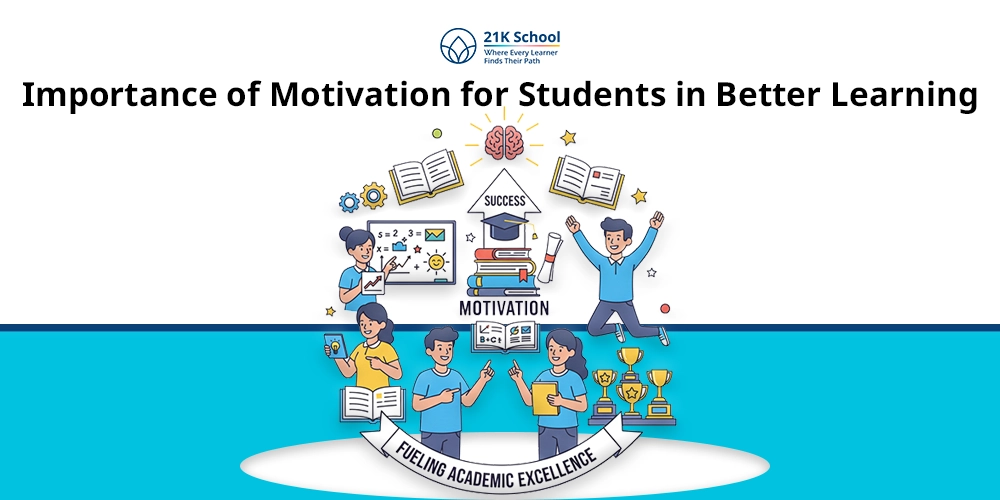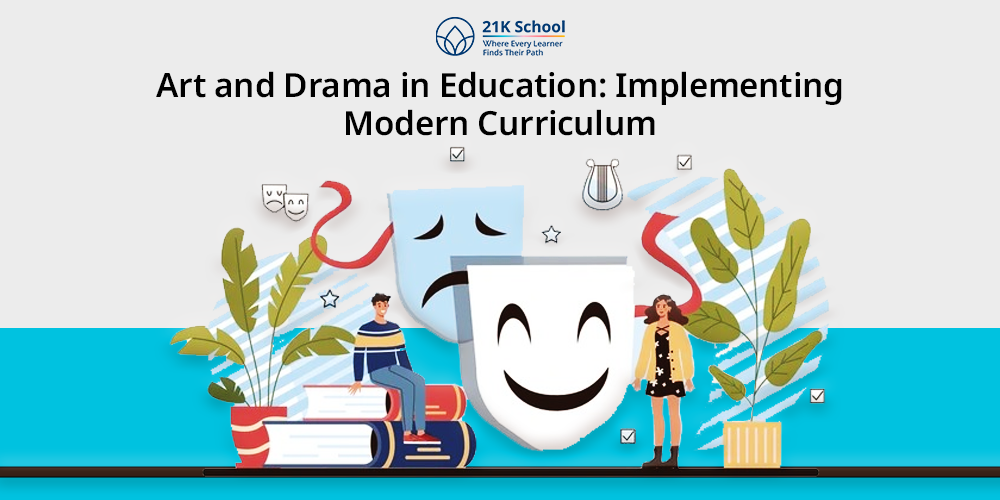
In this world of learning and online education STEM subjects and experiments are more dominant then art and drama.
Understand the future of online education and hoe emerging technologies reshaping kids growth.
Art and drama in learning is a growing call to reimagine the educational experience. It is a powerful tool in modern education.
Art and drama in education are unique tools that foster holistic development by enhancing creativity, problem-solving, and social skills.
These creative extracurricular activities encourage students to think outside the box, express themselves, and build confidence.
In this blog we will explore everything from history of art and drama to tips to promote these activities. Let’s begin!
Table of Contents
- What Is Art and Drama in Education?
- Historical Background of Art and Drama
- Importance of Art and Drama in Education
- Benefits of Implementing Art and Drama in Education
- Why Should Schools Promote Drama Art in Education?
- Challenges of Implementing Art and Drama in Education
- Tips for Parents to Promote Arts and Drama in Home
- Conclusion: Choose the Modern Curriculum
What Is Art and Drama in Education?
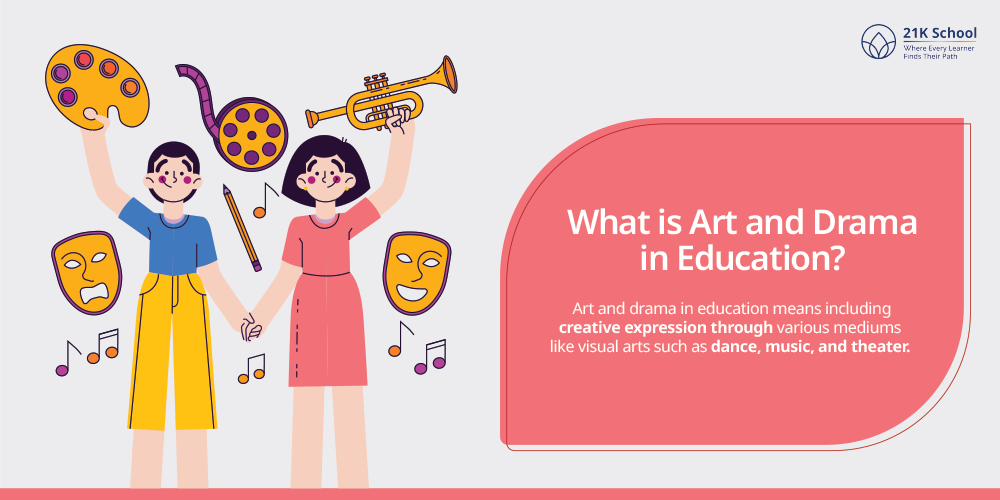
Art and drama in education means including creative expression through various mediums like visual arts such as dance, music, and theater.
Performing these arts and storytelling into the learning process is all about drama and art. While art also includes creative painting ideas, drawing, theatres etc.
In this modern curriculum art and drama practice has an equally important presence as other subjects.
Remember art and drama is not about stage performance or creating something unique, it is also developing critical thinking skills, empathy, creativity, and communication skills.
Learn how to develop critical thinking skills in students to improve their extracurricular activities.
Historical Background of Art and Drama
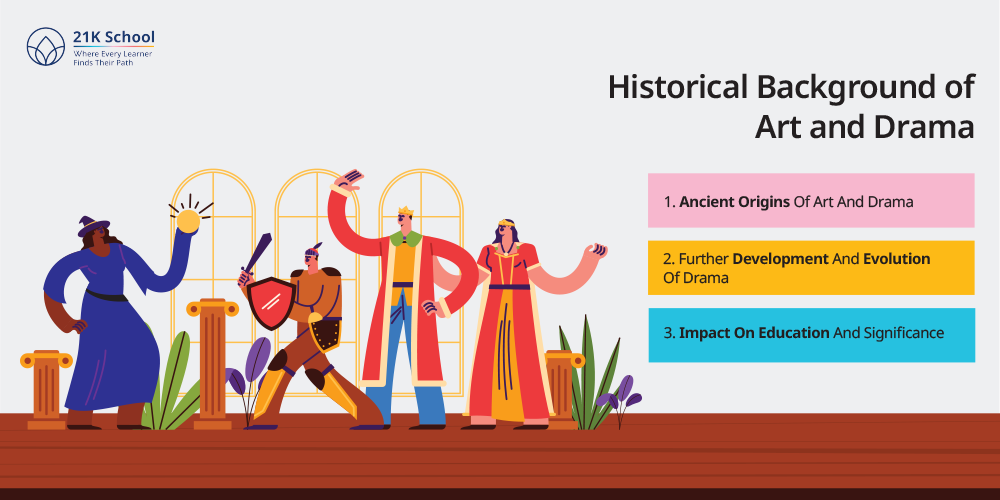
Historical background of art and drama had deep roots connected with various cultures and civilisations.
Art is mostly used for communication, religious expression, and storytelling. As per research wall painting is one of the oldest art forms.
The origin of the drama is from ancient Greece and later it evolved in other parts of the world.
The historical background of art and drama showcase that it is crucial parts of human culture and society.
1. Ancient Origins Of Art And Drama
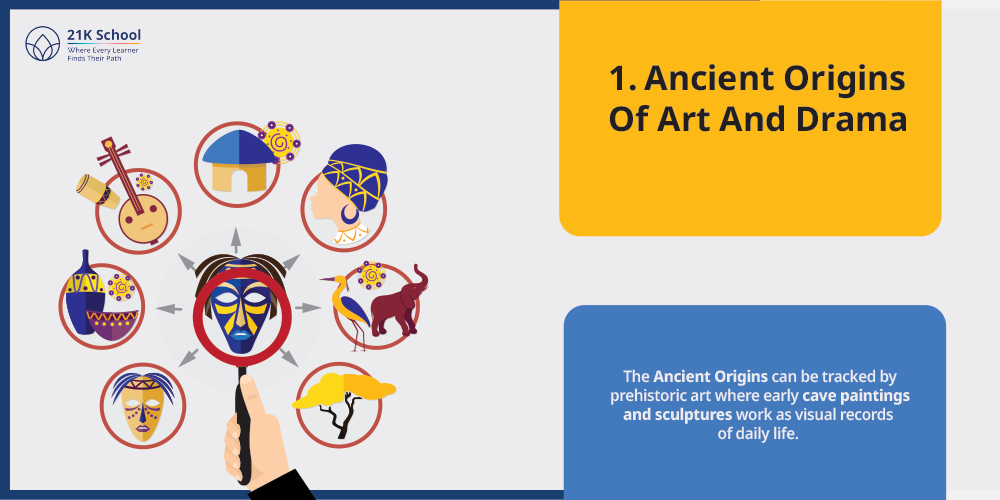
The Ancient Origins can be tracked by prehistoric art where early cave paintings and sculptures work as visual records of daily life.
From spiritual beliefs, passing knowledge to the stories of future generations everything in the walls.
From ancient Indian drama to the Golden Age of Greek drama everything helps in the evolution of art and drama.
2. Further Development And Evolution Of Drama
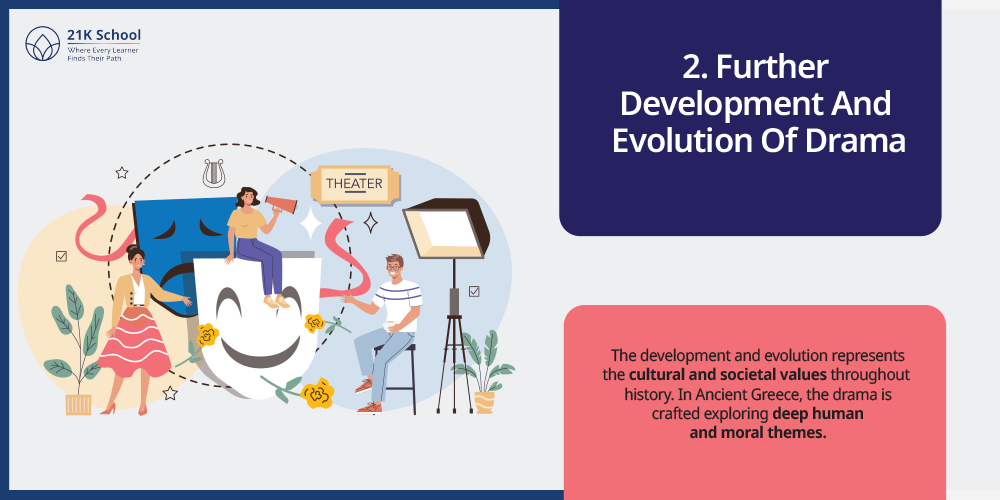
The development and evolution represents the cultural and societal values throughout history. In Ancient Greece, the drama is crafted exploring deep human and moral themes.
Modern drama, emerging in the late 19th and early 20th centuries, shifted focus to the lives and inner struggles of ordinary individuals. It often highlights themes of social alienation and existential conflict.
3. Impact On Education And Significance
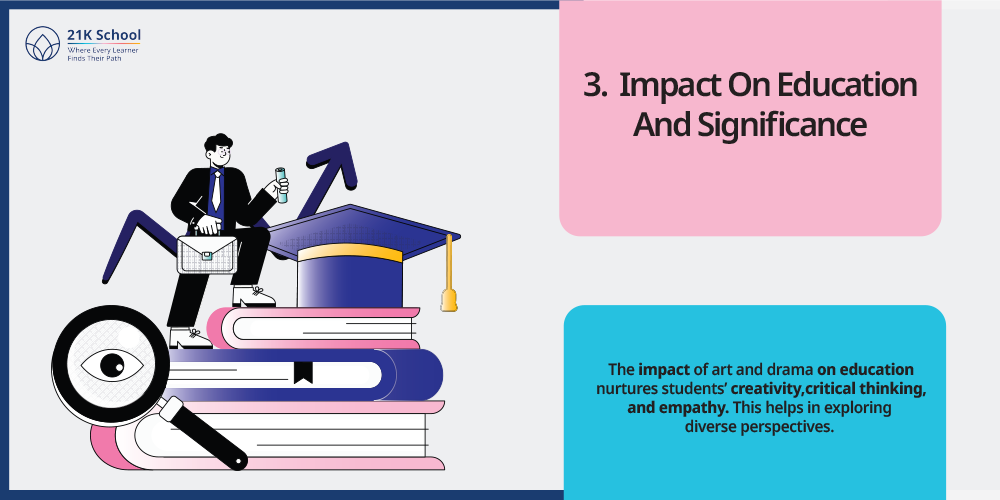
The impact of art and drama on education nurtures students’ creativity, critical thinking, and empathy. This helps in exploring diverse perspectives.
Art and drama not only provide creative abilities but also adding them ensures we can preserve and reflect cultural values, beliefs, and experiences.
It is a powerful tool for everyone from kids to adults which improves both personal development and societal progress.
Importance of Art and Drama in Education
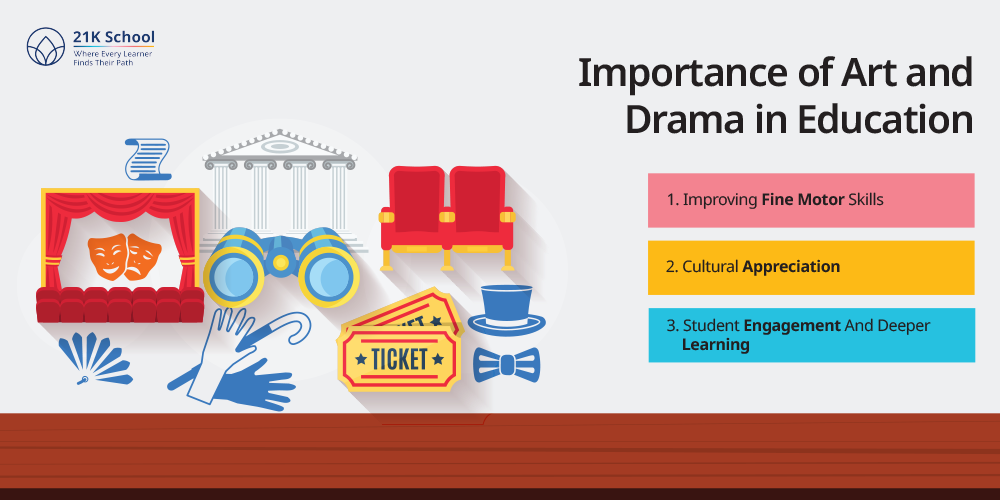
Education is nowadays far more different and interesting and hence mere academic schedule fails to achieve overall learner development.
Here comes the importance of art and drama along with other extracurricular activities in school.
1. Improving Fine Motor Skills
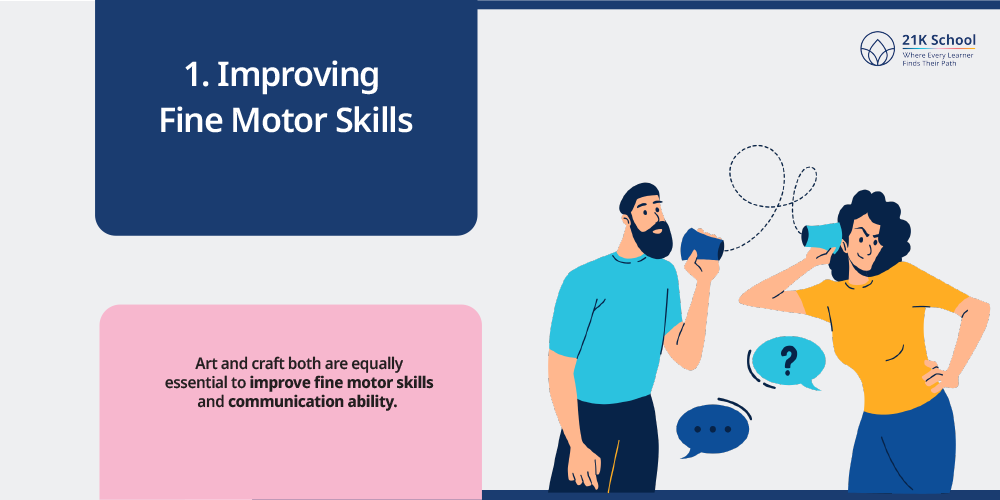
Art and craft both are equally essential to improve fine motor skills and communication ability.
Art activities, like drawing and painting, improve hand and eye contact communication skills and dexterity, while drama fosters communication.
2. Cultural Appreciation
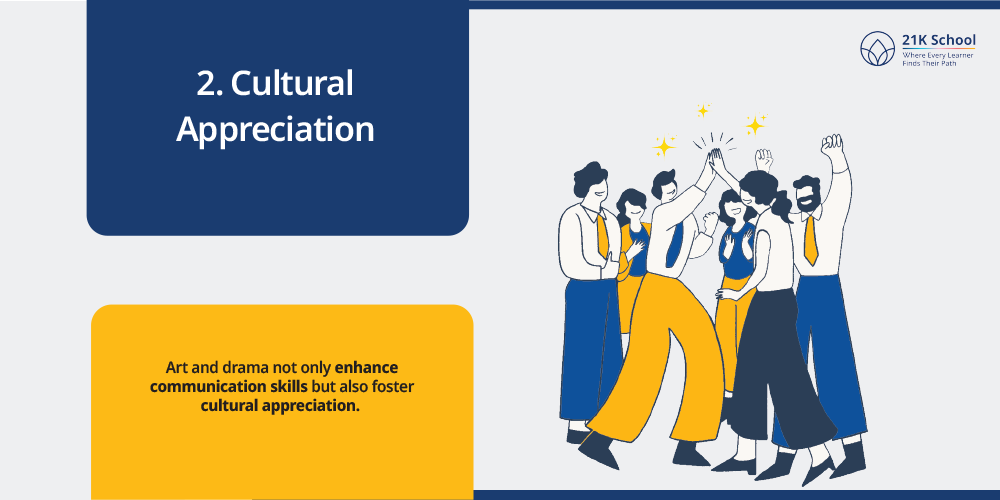
Art and drama not only enhance communication skills but also foster cultural appreciation.
India culture of art and drama is one of popular and exposure to diverse art forms and theatrical performances broadens perspectives and promotes empathy for different cultures.
3. Student Engagement And Deeper Learning
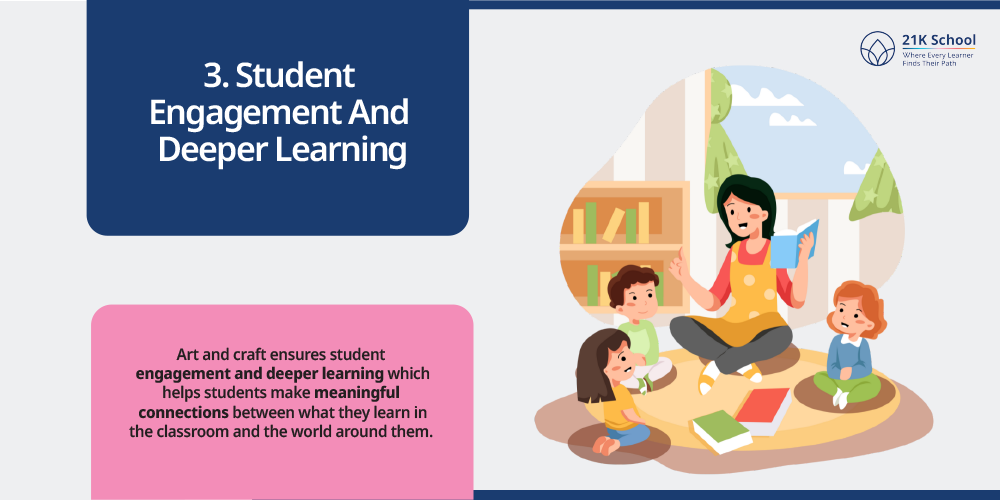
Art and craft ensures student engagement and deeper learning which helps students make meaningful connections between what they learn in the classroom and the world around them.
Benefits of Implementing Art and Drama in Education
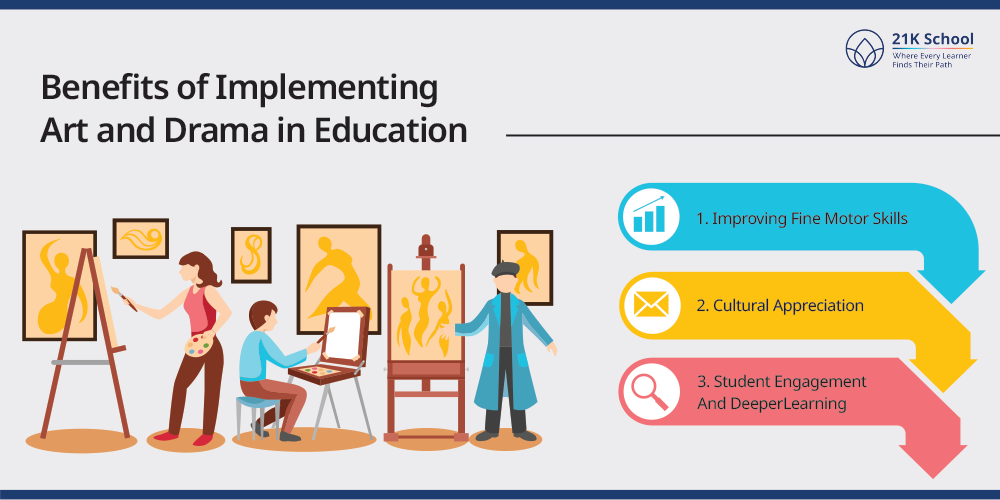
Including art and drama in kids’ education has various benefits such as encouraging innovation, improving interactions and facilitating integrated development.
These subjects are beneficial and foster a positive learning environment on studies and classroom engagement of students.
1. Fostering Creativity and Imagination
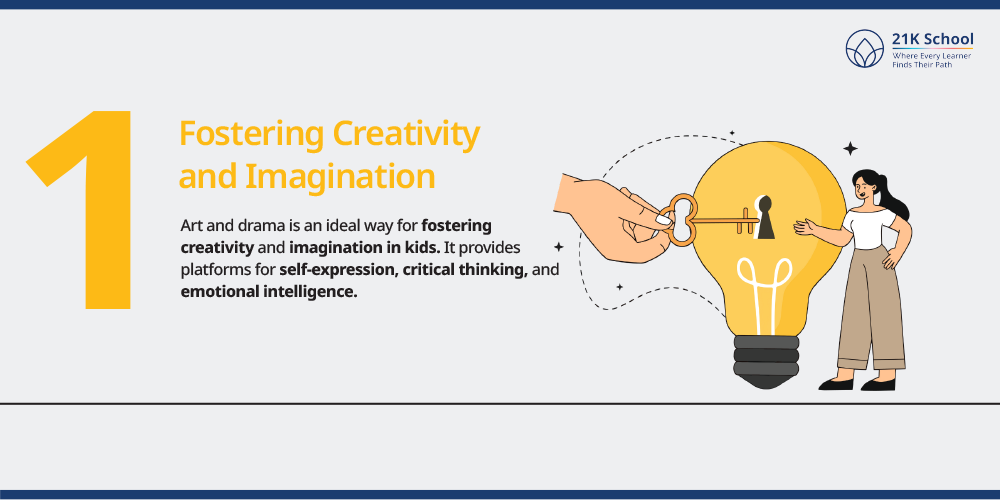
Art and drama is an ideal way for fostering creativity and imagination in kids. It provides platforms for self-expression, critical thinking, and emotional intelligence.
With art and drama in education students learn social emotional activities and creative thinking skills which carries over into science, mathematics, and everyday problem-solving.
2. Enhance Communication
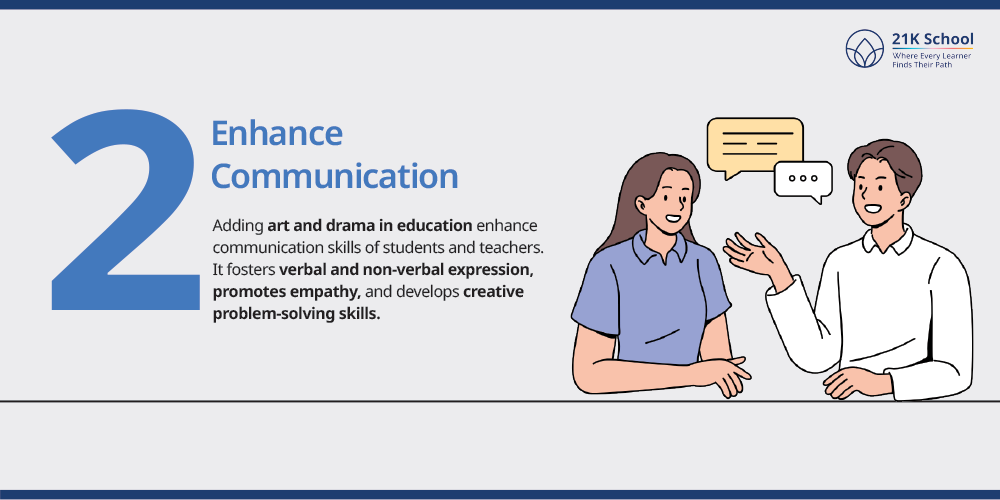
Adding art and drama in education enhance communication skills of students and teachers.
It fosters verbal and non-verbal expression, promotes empathy, and develops creative problem-solving skills.
3. Promoting Teamwork and Collaboration
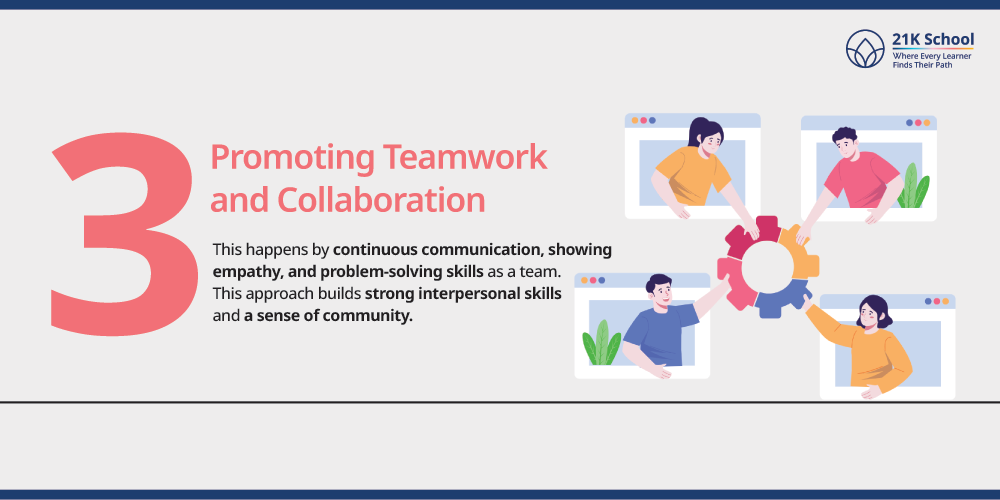
One of the prime benefits of incorporating art and drama in education is promoting teamwork and collaboration.
This happens by continuous communication, showing empathy, and problem-solving skills as a team. This approach builds strong interpersonal skills and a sense of community.
4. Boosting Self-Confidence and Self-Esteem
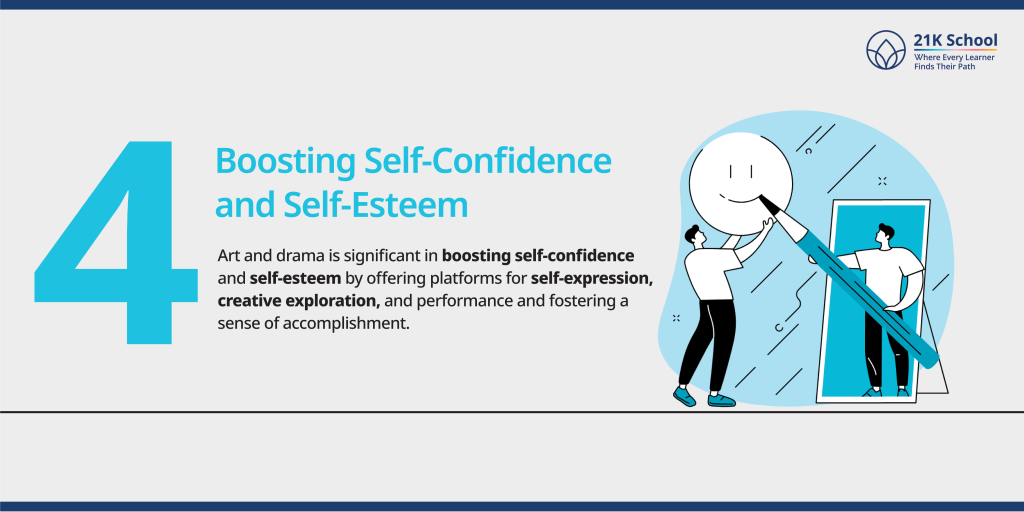
Art and drama is significant in boosting self-confidence and self-esteem by offering platforms for self-expression, creative exploration, and performance and fostering a sense of accomplishment.
This increases conferences in students through public speaking and storytelling.
5. Enhancing Cognitive Skills and Memory
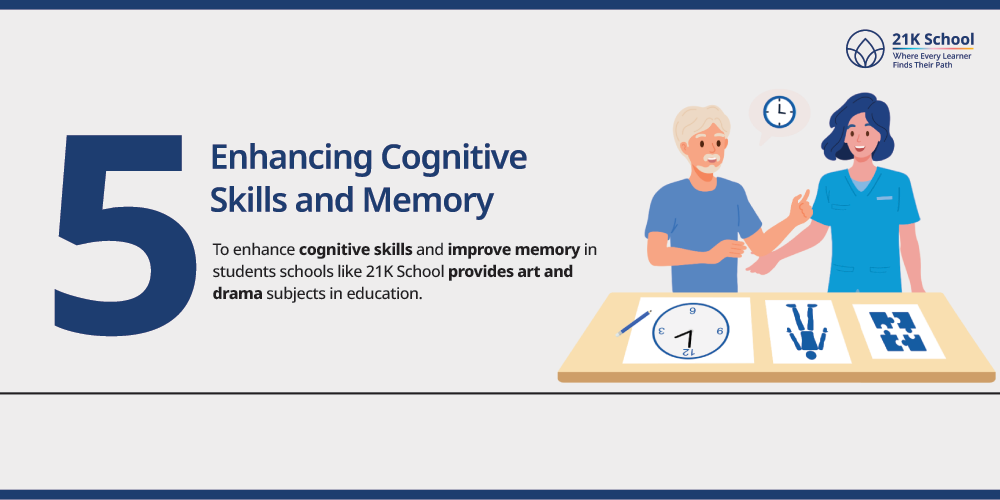
To enhance cognitive skills and improve memory in students schools like 21K School provides art and drama subjects in education.
Incorporate these subjects in kids education by reading creative art and craft ideas for kids.
This not only promotes creative thinking, but also visual-spatial reasoning. Learn with a unique blend of traditional and modern curriculum together.
Also read about cognitive development of children.
Why Should Schools Promote Drama Art in Education?
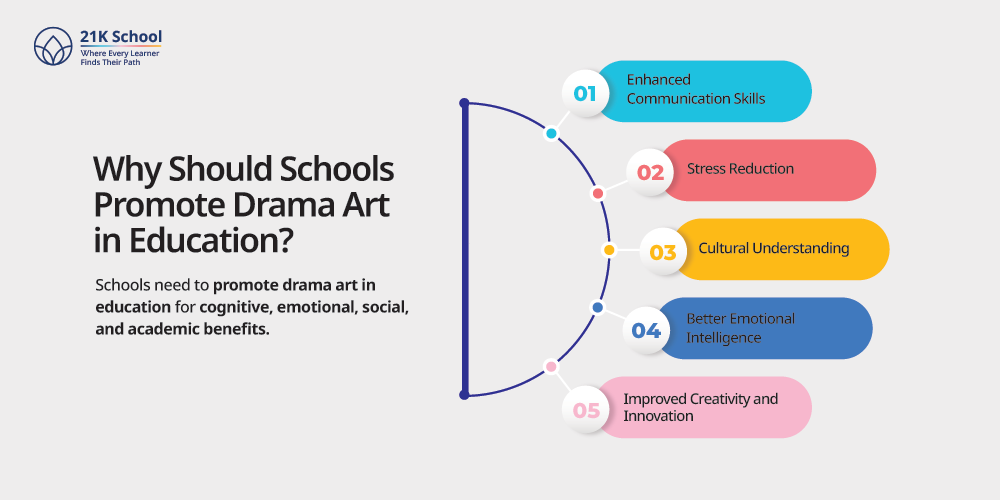
Schools need to promote drama art in education for cognitive, emotional, social, and academic benefits.
Here are key reasons why drama should be part of the school curriculum:
1. Enhanced Communication Skills

Most of the schools promote drama as an art to enhance communication skills both verbal and non-verbal of students.
2. Stress Reduction
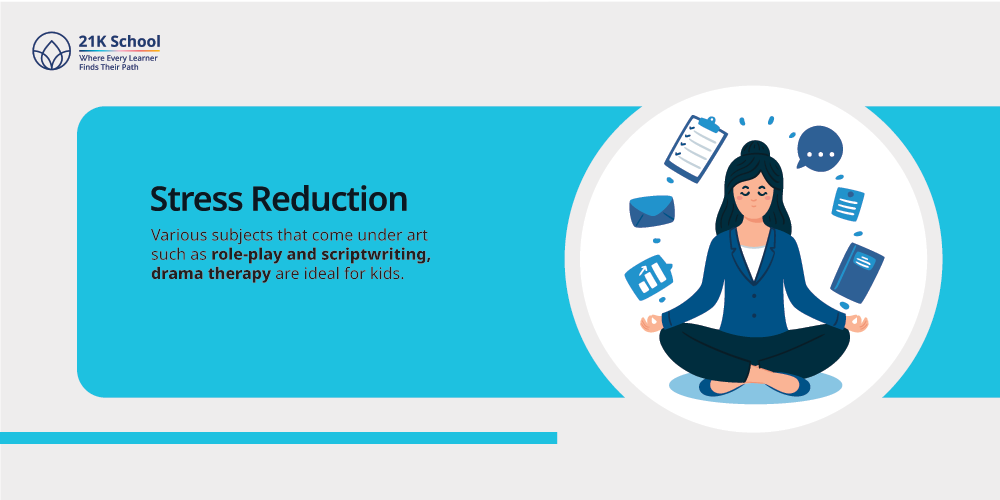
Various subjects that come under art such as role-play and scriptwriting, drama therapy are ideal for kids.
These subjects provide students with valuable outlets for stress reduction and emotional expression.
3. Cultural Understanding
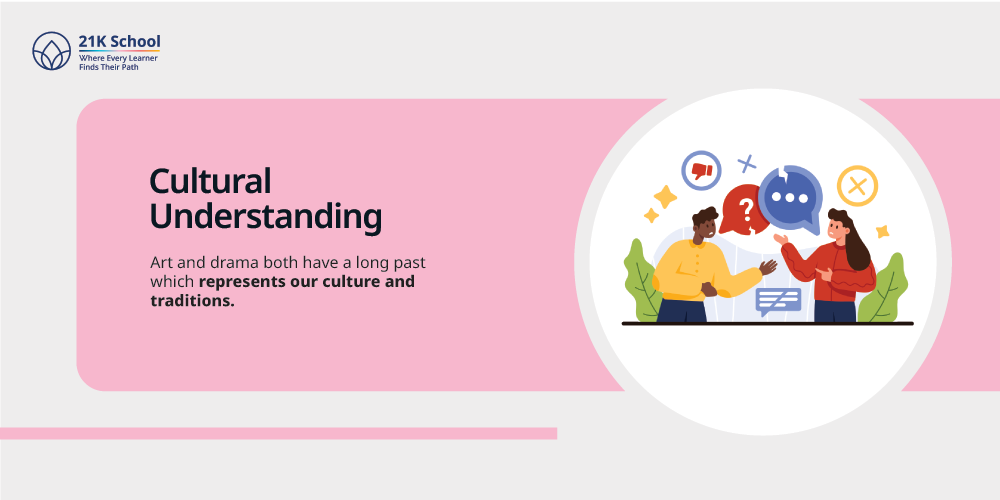
Art and drama both have a long past which represents our culture and traditions.
Schools should encourage these subjects to foster cultural understanding by exposing students to diverse perspectives, promoting empathy, and encouraging communication across cultures.
4. Better Emotional Intelligence
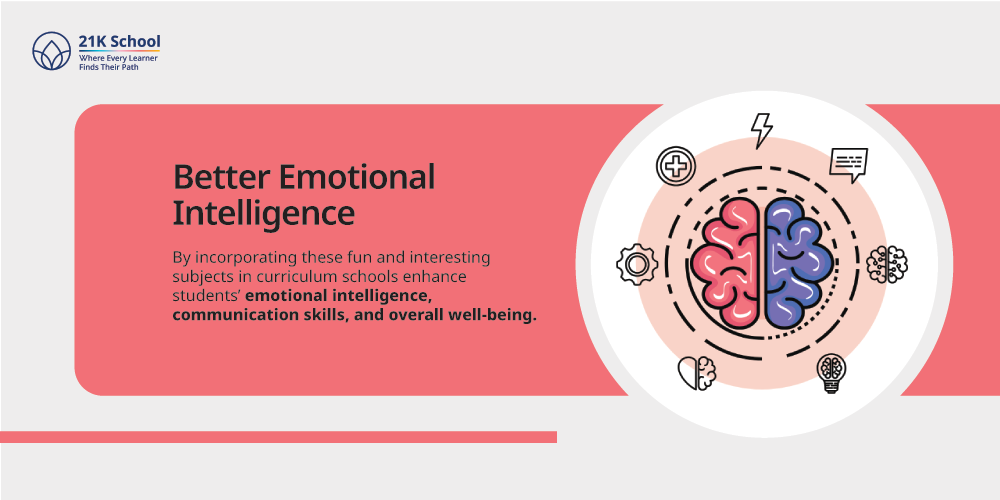
By incorporating these fun and interesting subjects in curriculum schools enhance students’ emotional intelligence, communication skills, and overall well-being.
5. Improved Creativity and Innovation
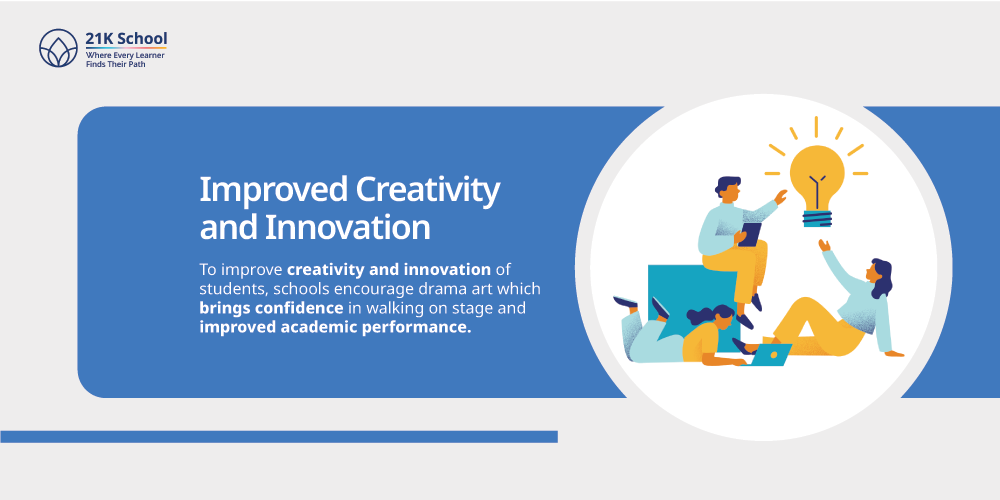
To improve creativity and innovation of students, schools encourage drama art which brings conference in walking on stage and improved academic performance.
To improve creativity, kids must read creative activities at home.
Challenges of Implementing Art and Drama in Education
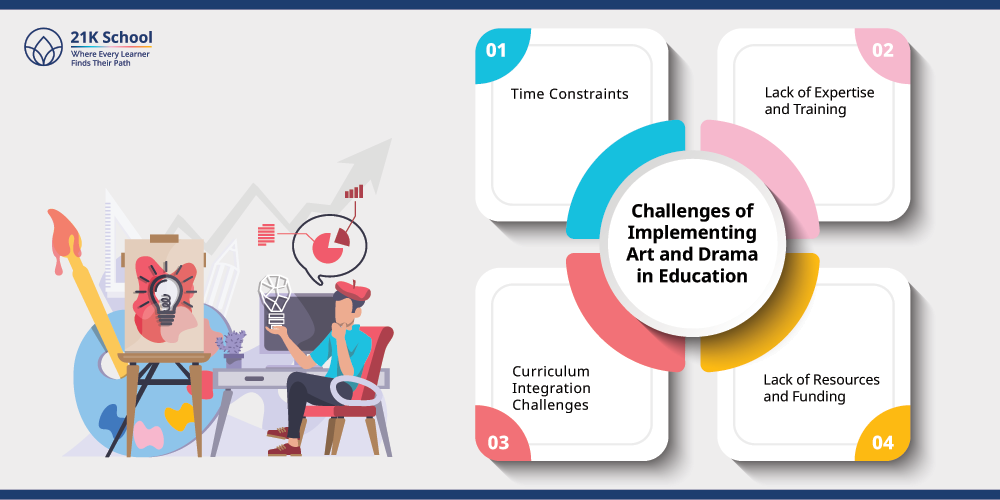
1. Time Constraints
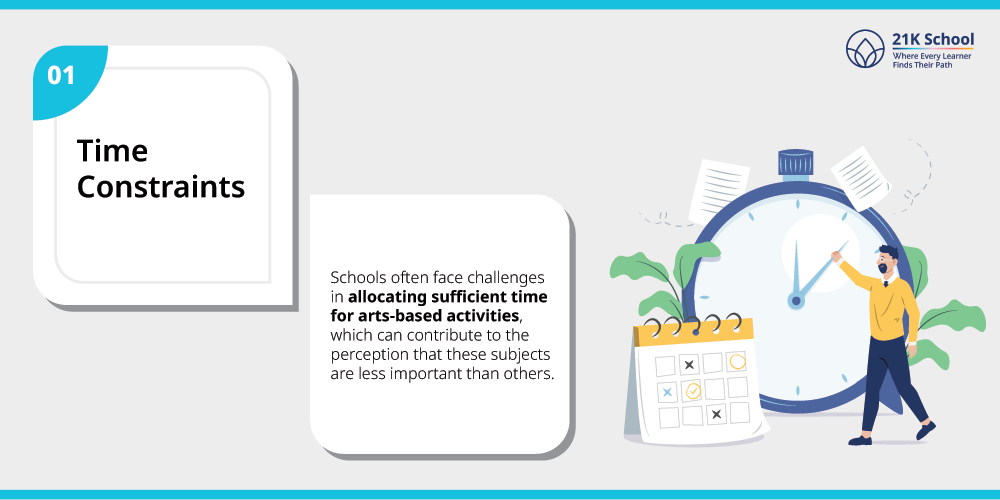
Time constraints are a significant problem. Schools often face challenges in allocating sufficient time for arts-based activities, which can contribute to the perception that these subjects are less important than others.
Solution:
Utilize the time efficiently by exploring strategies such as making schedules for everyday activities incorporating drama exercises in learning.
To engage in drama activities in school read how to do time management.
2. Lack of Expertise and Training
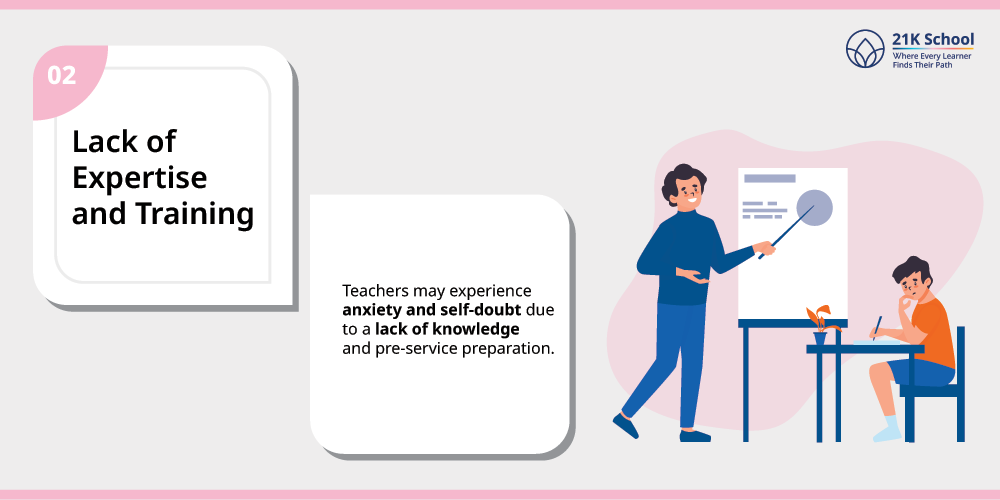
Challenges like lack of teacher expertise and training is common in many schools. Sometimes teachers may experience anxiety and self-doubt due to a lack of knowledge and pre-service preparation.
Solution:
Schools should provide comprehensive professional development time and environment for teachers to understand the modern curriculum integration, assessment, and teaching strategies.
3. Curriculum Integration Challenges
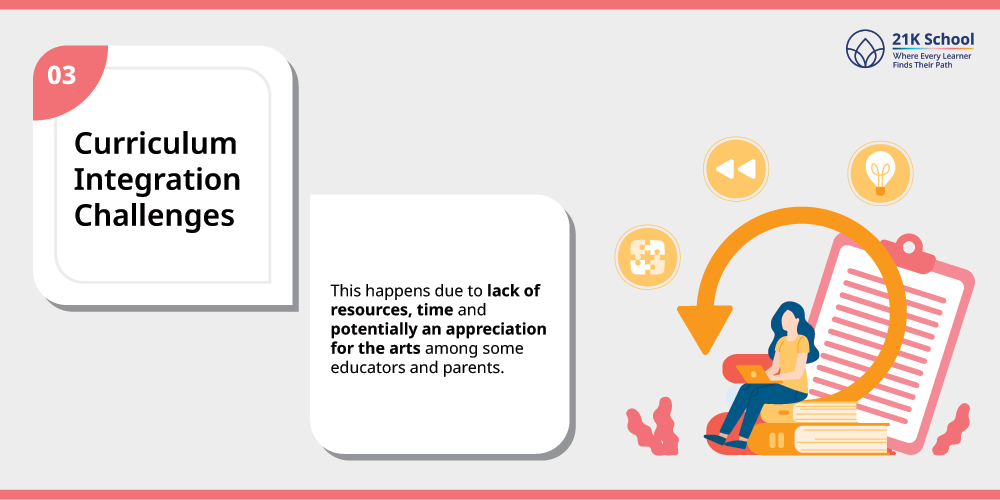
Due to a packed schedule integrating curriculum integration challenges are common. This happens due to lack of resources, time and potentially an appreciation for the arts among some educators and parents.
Solution:
School authorities should create a culture that values and supports the integration of art and drama in the curriculum.
4. Lack of Resources and Funding

Lack of finding and resources means shortages of qualified teachers, inadequate facilities, and insufficient funding for supplies and curriculum development.
Solution:
To resolve it, schools need to collaborate with external organizations and ask for corporate social responsibility funds to promote art and culture.
Tips for Parents to Promote Arts and Drama in Home
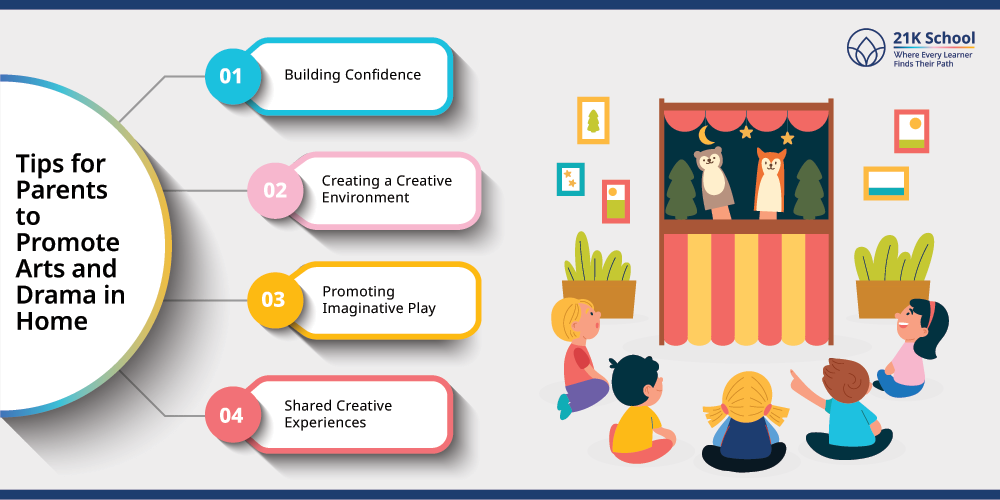
1. Building Confidence
Art and drama education at home build confidence in creative expression, celebrate efforts, and create opportunities for role-playing and public speaking.
Remember to focus on learning and growth. It’s time to praise over perfection.
2. Creating a Creative Environment
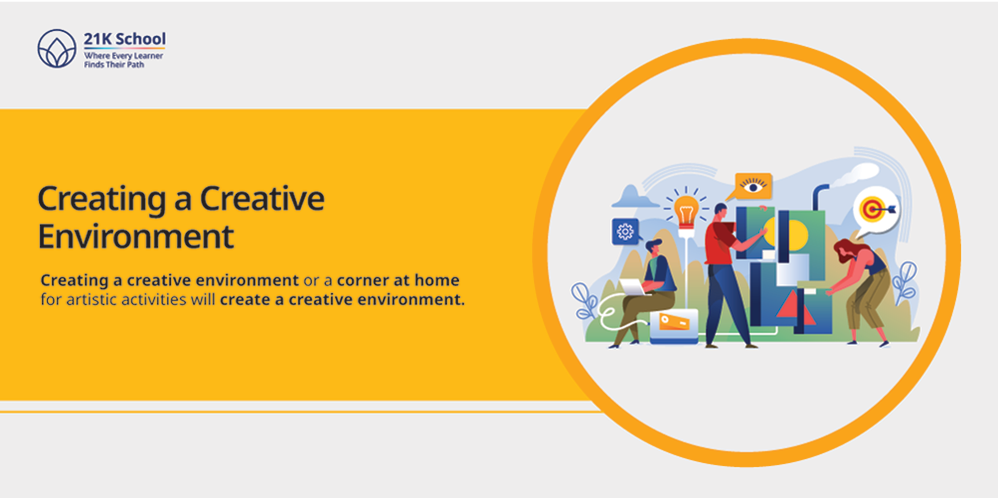
Creating a creative environment or a corner at home for artistic activities will create a creative environment.
Stock it with simple supplies like paper, markers, costumes, and musical instruments. This dedicated space signals that creativity is valued and encouraged.
3. Promoting Imaginative Play
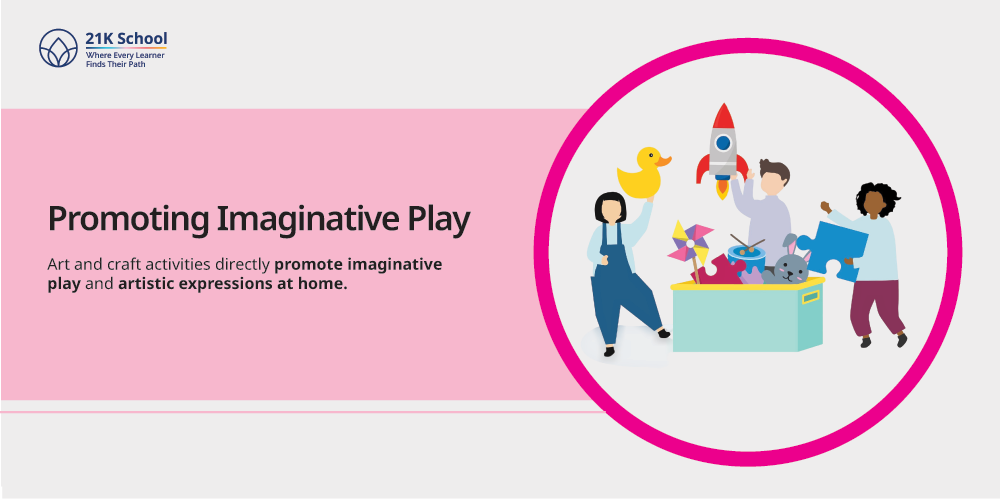
Art and craft activities directly promote imaginative play and artistic expressions at home.
It encourages storytelling, artistic exploration, role-playing, and creates a stimulating environment with open-ended toys and props.
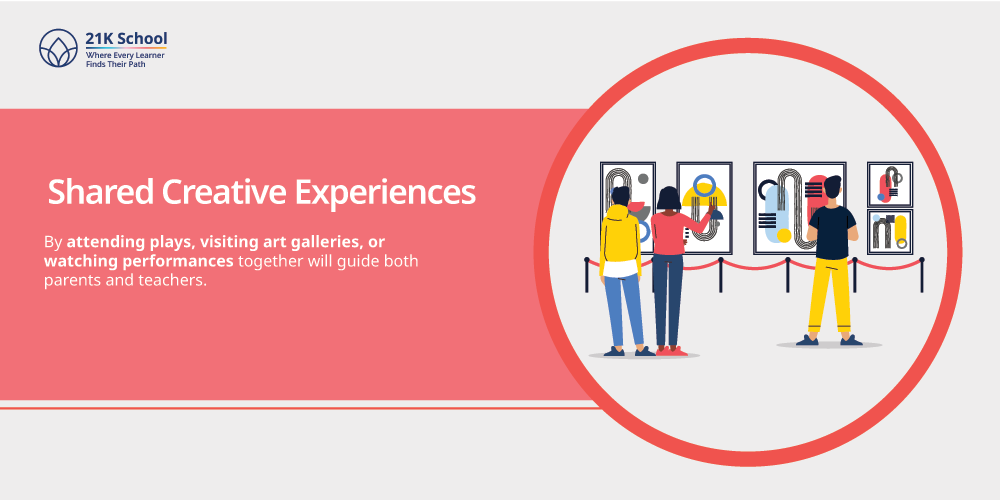
By attending plays, visiting art galleries, or watching performances together will guide both parents and teachers.
These shared creative experiences can inspire children and spark meaningful conversations. They also demonstrate that creativity is a lifelong pursuit worth investing in.
Conclusion: Choose the Modern Curriculum
In the modern time and education system whether it is online learning or traditional classroom approach drama and art is crucial.
It transforms the way students think about learning and enriches their experience. This discipline is powerful for personal expression, social connection, and intellectual growth.
The modern curriculum includes the arts equips learners with the creativity, empathy, and critical thinking they need to thrive in a rapidly changing world.
It’s time to go beyond this and embrace something extra in the report card.

